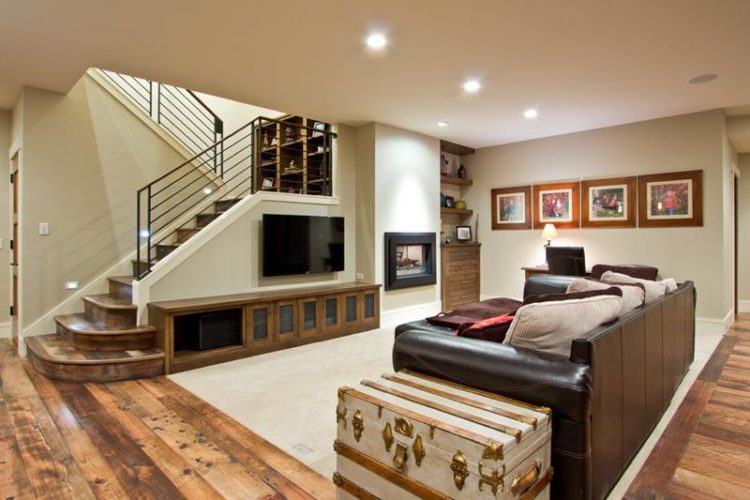It’s long been stated that hardwood shouldn’t be used in basements. Basements are often afflicted with damp, humidity or flooding problems which can severely damage hardwood flooring. But this doesn’t necessarily mean that it’s impossible to lay a hardwood floor in a basement. Creating the right conditions could make it possible for a hardwood floor to live a long and healthy life. For the best hardwood flooring for basements tips, check out this article.
Creating The Right Conditions
If hardwood floors are susceptible to high humidity and moist conditions, ensuring your basement remains dry will be necessary to allow for its installation.
This begins on the outside of your house by making sure water runs away from the house rather than towards it. Eavestroughing, gutters and drainpipes should all be in good repair and functioning properly.
If the plumbing inside your house is prone to leaking it should be repaired before considering hardwood flooring in the basement.
A floor based moisture barrier will also be necessary to prevent water vapour from rising out of the concrete floor or from the foundation walls. This can be composed of plastic, felt, paint or adhesives, depending on your situation.
To remove the last traces of humidity you may need to run a dehumidifier on a regular basis. Many modern dehumidifiers can be quite powerful without being overwhelmingly noisy.
Choosing Your Flooring Material
Solid hardwood is generally not used in basements. Solid hardwood is often too expensive to risk even a small amount of moisture which can cause the planks to warp and cup.
Engineered hardwood, on the other hand, has a thin hardwood veneer that’s attached to a dimensionally stable, plywood base. This makes it more resistant to small quantities of moisture. As long as all your humidity mitigation efforts continue to function and you don’t experience a severe flood, engineered hardwood can make a decent basement flooring material.
For the longest time, laminate flooring was rarely considered usable for basement flooring. The pressed wood interior of the plank is susceptible to warping in the presence of relatively small amounts of moisture. This makes it somewhat dangerous to use in a humidity prone basement. However, the advent of moisture resistant laminate flooring has changed all this. Laminate flooring has since become an economical way to give your basement the hardwood flooring look.

